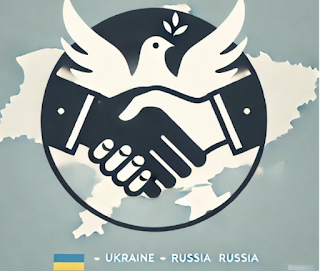March 1, 2025
As the war between Russia and Ukraine drags into its third year, the latest Russian drone strikes on Kharkiv have once again underscored the devastating human toll. Overnight attacks damaged a medical facility, residential buildings, and key civilian infrastructure, leaving at least seven wounded—including two six-year-old children. Ukrainian officials report that 154 Shahed-type drones were launched, with 103 shot down by air defense systems. While Ukraine continues to fight back, the question lingers: how can the world help stop the war without escalating the conflict?
Escalation and Diplomatic Deadlocks
The attacks on Kharkiv, Zaporizhzhia, Donetsk, Sumy, Odesa, Chernihiv, Cherkasy, and Kyiv highlight the ongoing challenges Ukraine faces as Russian forces intensify their military operations. Despite Ukraine's resilience, including the downing of a majority of Russian drones, civilian casualties and infrastructure damage continue to mount. Meanwhile, President Volodymyr Zelenskyy's latest diplomatic efforts in the UK signal Ukraine’s push for stronger European support ahead of a crucial summit of EU leaders.
However, diplomacy remains gridlocked. The proposed peace talks between Russia and Ukraine have been repeatedly stalled due to mutual distrust and diverging interests. Ukrainian leadership insists on full territorial integrity, while Russia demands security guarantees and strategic concessions that Kyiv sees as unacceptable.
The Global Dilemma: How Can the War End?
With no clear resolution in sight, world powers face a pivotal decision: should they continue providing military support, or is there an alternative that could de-escalate the war? Here are three possible strategies the international community could adopt to help achieve peace:
A Neutral Mediator-Led Peace Process
While past mediation efforts have faltered, a renewed push by a neutral global power—such as India, Brazil, or a coalition of UN-backed states—could help establish new terms for negotiations. A ceasefire monitored by an independent peacekeeping force could provide the breathing room necessary for real diplomatic progress.
Security Guarantees for Both Sides
Ukraine seeks long-term security assurances from NATO and the West, while Russia wants NATO’s expansion to slow or halt. A carefully negotiated security agreement, akin to Cold War-era arms treaties, could prevent further escalation and establish red lines that neither side can cross.
Economic and Resource-Based Diplomacy
Economic sanctions have crippled Russia’s financial sector, but they have not forced an end to the war. A shift toward economic incentives—such as structured trade agreements or energy partnerships—could provide a pathway for compromise, particularly if tied to rebuilding Ukraine’s shattered economy.
The Trump Factor: Shifting U.S. Stance on Russia
Amidst the conflict, former President Donald Trump’s administration has signaled a radical departure from previous U.S. policy on Russia. Recent reports indicate that the White House no longer views Russia as a cybersecurity threat, despite intelligence warnings. This shift could have global implications, particularly if the U.S. redefines its approach to diplomatic relations with Moscow.
During a recent Oval Office meeting with President Zelenskyy, Trump and Vice President J.D. Vance reportedly pressured Ukraine to consider direct negotiations with Russia. The meeting, which also touched on U.S. access to Ukraine’s rare-earth minerals, was overshadowed by a controversy involving a Russian TASS journalist who was removed from the White House press pool. This development raises further questions about the administration’s stance on press freedom and its evolving relationship with Moscow.
A Closing Window for Peace
With Ukraine’s energy infrastructure under attack and its economy strained, the window for a sustainable peace agreement is closing. While military aid and strategic alliances remain vital, global leaders must explore alternative pathways that prioritize de-escalation without abandoning Ukraine’s sovereignty.
The world cannot afford another year of war. The question now is whether diplomatic innovation and strategic compromises can succeed where military solutions have failed. If the international community truly wants to step back while making the war stop, the time for decisive and creative action is now.





No comments:
Post a Comment